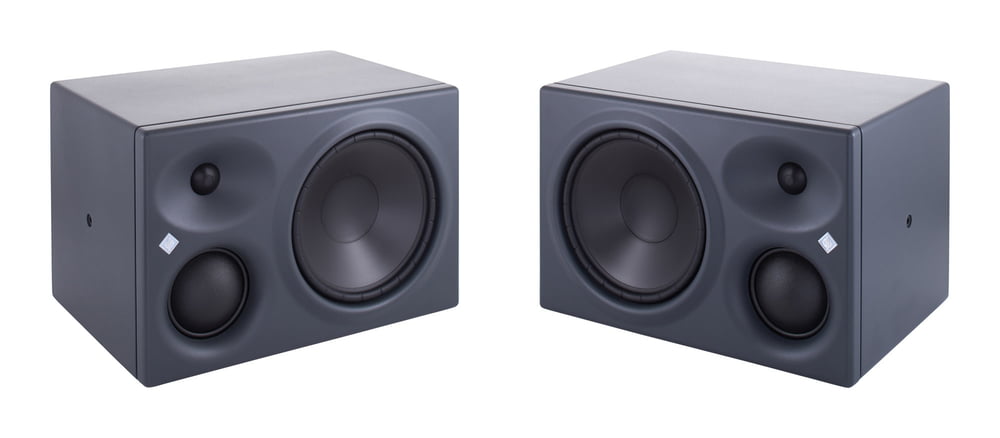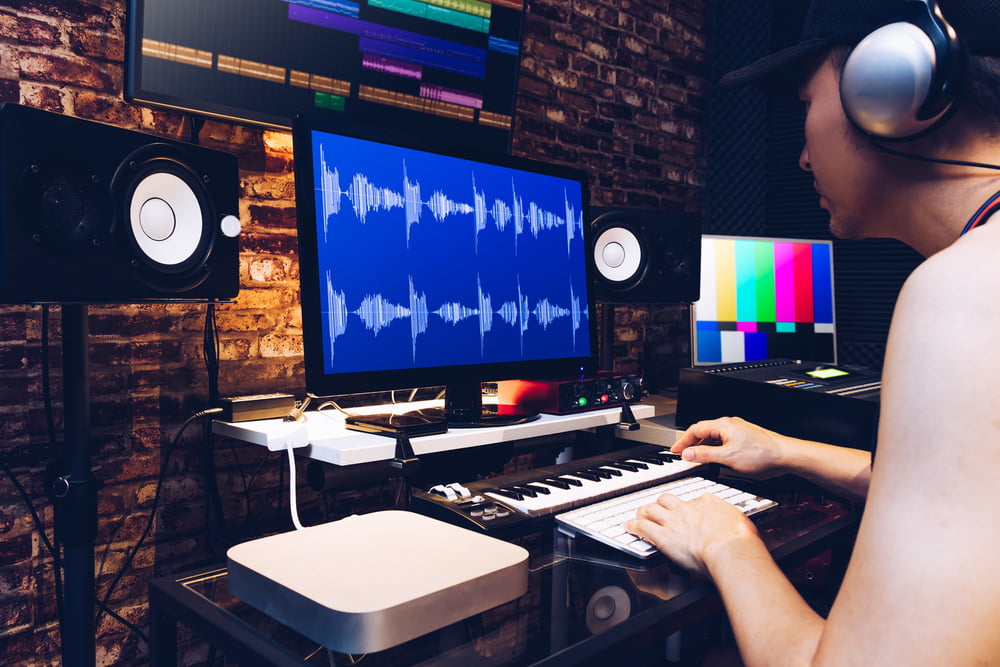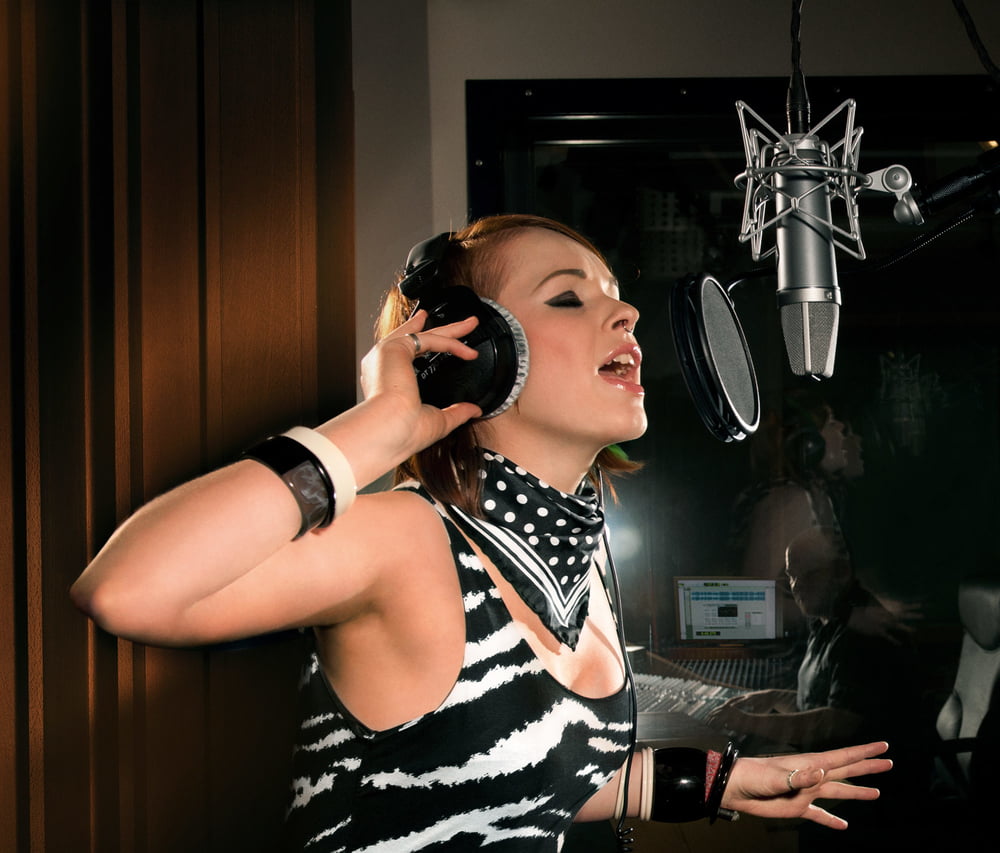8. Monitor speakers and headphones
We have worked our way along the signal chain step by step. We've set up an optimised room, at least one mic, an audio interface and a powerful computer with DAW software. You're all set to do some beautiful recording. But wouldn't it be nice of you were able to also hear what you've just laid down?
Monitor speakers
That's right, you'll need to get some monitor speakers. In studio use, active speakers are what practically everyone opts for. They have advantages compared to passive speakers which all add up to better sound quality in the end. You won't have to spend much time on this decision, really, since basically all available near field speakers, the typical speaker type for use in studios, are active speakers.
What you should spend some time thinking about, however, is the size of your speakers, since size directly affects sound quality. To get a good bass sound, you'll need speakers with sufficiently large woofers and cabinet volume. Small 5" speakers simply cannot give you a satisfactory bass sound down to the lowest frequencies. If the quality of the bass sound is important to you, you should go for 8" speakers at least. But these larger speakers also require more space in your studio to allow for the proper listening distance from the speakers - if you sit too close to them, the sound won't be balanced. Since longer distances form the speakers mean that the acoustic characteristics of the room itself become more important, it's even more important that these are on point. So you see how important it is not just to buy the appropriate equipment but also to optimise the acoustics.

Apart from this, you should opt for a set of speakers that sound as neutral as possible. Your speakers' job is not to dress up the sound - you need to hear what you have actually recorded. It's no use to you to have a set of speakers that give a brilliant hi-fi sound if your mix sounds different, and probably worse, on other speakers. Only with neutral speakers can you be sure that your mix will sound good on any other playback system.
Headphones
Headphones are another sound monitoring device that your home studio should be equipped with. Their main purpose is to supply musicians with a metronome track or playback music to which they can add their voices or instruments. When you record with a mic, using headphones is the only way to ensure that the playback track is not recorded at the same time.
For the recording room, you should go for a pair of closed headphones. These don't just attenuate exterior sound but also reduce the risk of the sound escaping from the headphones and being recorded through the mic. This is especially important in recording vocals when the vocalist is very close to the mic.





